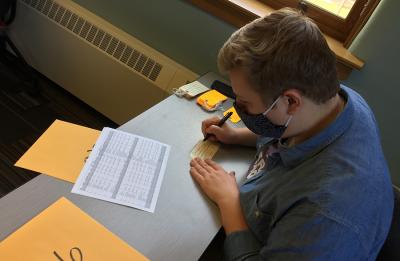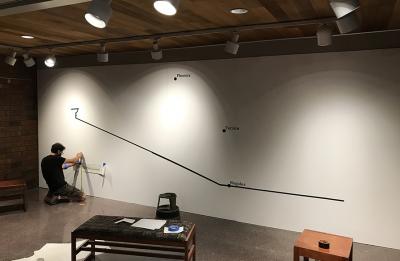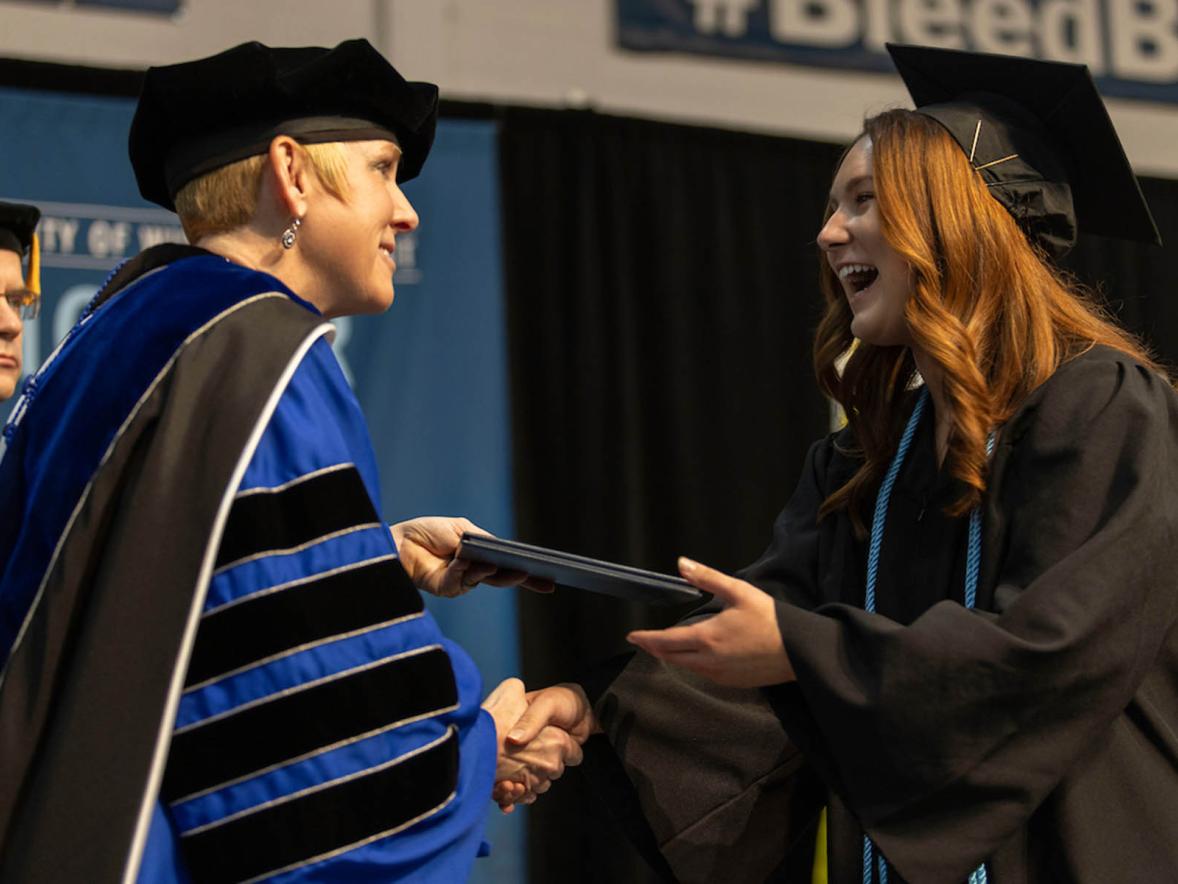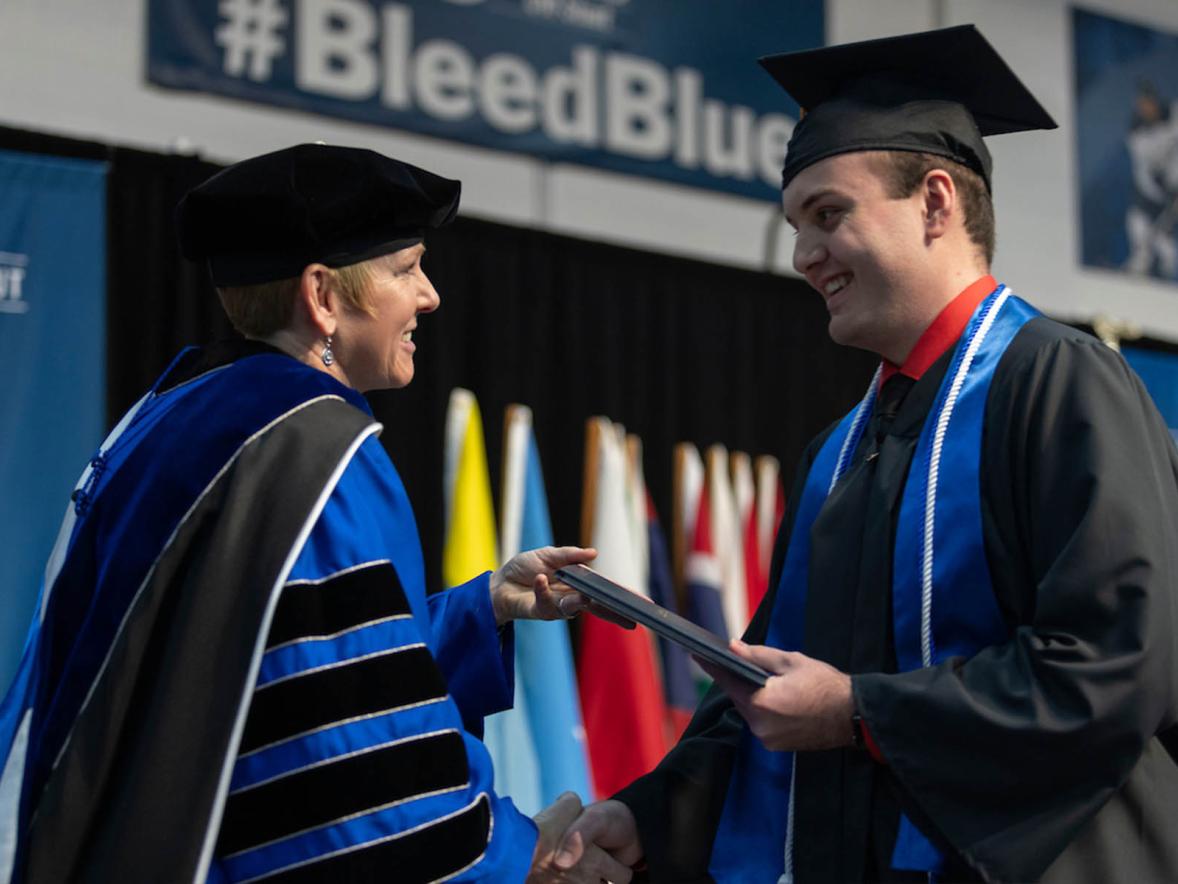University of Wisconsin-Stout student Andrew Hoepfner filled out a manila toe tag for Jamie Pablo Gonzalez, who was just 17, one year younger than Hoepfner, when he died.
Gonzalez died from a gunshot wound to the chest near Pinal, Ariz., while trying to cross the Sonoran Desert to come to the U.S.
The toe tag with his name will be one of 3,500 handwritten tags representing migrants who have died trying to cross the desert from the mid-1990s to 2019. It is part of an exhibition in the lobby of the University Library entitled Hostile Terrain 94.
It is a participatory art exhibit sponsored and organized by the Undocumented Migration Project, a nonprofit research-art-education-media collective, directed by anthropologist Jason De Leon.
The toe tags are geolocated on a wall map of the desert showing the exact locations where remains were found. UW-Stout is one of about 150 institutions around the world housing the installation this year. The project at UW-Stout is co-sponsored by the campus colleges, Honors College, Nakatani Teaching and Learning Center, Furlong Gallery and library.
“The biggest takeaway for me is how people really don’t know the degree of violence and death there is in the desert and how it shouldn’t be happening,” said Hoepfner, a first-year food science and technology major, of Fond du Lac. “It is weird to see people the same age as me going through something that traumatic.”

The exhibit, which is expected to be finalized in late October or early November and be up the rest of the academic year, will help educate students and the community about the challenges faced by migrants and how U.S. immigration policy perpetrates violence against people trying to make a better life for themselves, said Thomas Pearson, UW-Stout professor of anthropology.
The UW-Stout Honors College read the book “The Land of Open Graves: Living and Dying on the Migrant Trail” by De Leon for the fall colloquium. De Leon is also director of the Undocumented Migrant Project and head curator of Hostile Terrain 94.
Students met in small groups virtually and in person with social distancing to discuss the book.
Honors College is a curriculum designed to enrich students’ educational experiences, foster more in-depth learning and help them become creative thinkers and leaders. Each year the Honors College, which has more than 550 students involved this fall, chooses a reading to promote discussion and bring attention to social issues, Pearson said.
“It gets at the lived experience of migrants,” he said of this year’s selection. “But it also exposes the suffering and violence they experience on the migrant trail.”
On Thursday, Oct. 8, De Leon, who is also a professor of anthropology and Chicana/o studies at UCLA, will take part in a virtual discussion from 7 to 8:30 p.m. To access the event, go to https://tinyurl.com/TheDeLeonTalks. De Leon is also a 2017 MacArthur Foundation Fellow.
To view a UW-Stout student-created Honors College film introducing the migration issue and art exhibit, go here.

Luisa Lara, a senior applied social science major, filled out toe tags as part of a volunteer opportunity with Latinos Unidos, a UW-Stout student organization to promote Latino/Hispanic culture. She found it eye-opening and wishes even more students would become involved in the project.
“Filling out those tags was very surreal to me,” said Lara, of Blaine, Minn. “It definitely hit close to home for me. I have family who traveled some of the same paths as those whose tags I am filling out. I was very emotional because I was relating it to my family and thinking about how this could have been them.”
Holding a black pen, Katie Ferguson, a junior graphic design and interactive media major, filled out an orange toe tag for unidentified human remains found along the trail. The activity was part of her Honors College cultural anthropology course.
“I was really moved by the book,” Ferguson, of Minocqua, said. “I have only ever heard of immigration as a problem. It opened my eyes to realize this is not a political issue; it’s a humanitarian one. People are just trying to live a better life.”
The toe tags made her realize that these are real people with families who died along the trail, Ferguson said.
She believes that once all the tags are hanging on the map art display the impact will be alarming.
“I think it will be shocking to see how many people have lost their lives particularly in specific places along the trail,” she said. “It will show what areas of the journey are the most dangerous.”
Ferguson started writing a toe tag for Jorge Sanchez, whose remains were found on Nov. 14, 2017, at the coordinates latitude 32.7873 and longitude -113.2526 near Maricopa, Ariz.
Sanchez’ s cause of death is listed as unknown.






